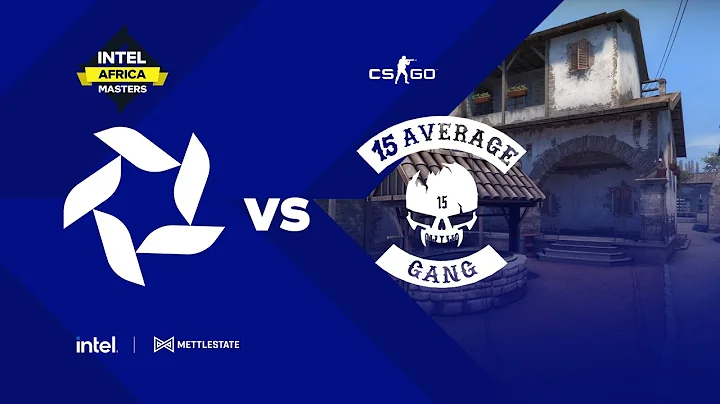Unlocking the Power of Intel Adaptive Voltage: Exploring Load-line and V/f Curve
Table of Contents:
- Introduction
- Configuring Voltage on Intel Platforms
- Adaptive Mode
- Override Mode
- Adaptive Mode vs. Override Mode
- Understanding VF Curve and Voltage Frequency
- Advancements in Adaptive Voltage Function
- Advanced Voltage Offset
- VF Point Offset
- Choosing the Mode for Dynamic Systems
- Steps in Setting CPU Voltage in Adaptive Mode
- Load Line Characteristics and Voltage Droop
- VRM Load Line for Stable Settings
- Specific Rules for Voltage Configuration
- Determining the Right Voltage for Different Frequencies
- Options for Setting Adaptive Voltage
👉 Configuring Voltage on Intel Platforms
Configuring the voltage on Intel platforms can be done in two ways: adaptive mode and override mode. Each mode has its own purpose and considerations. In this article, we will explore the differences between adaptive mode and override mode and understand how to choose the right configuration for your system.
Adaptive Mode vs. Override Mode
Adaptive Mode:
Adaptive mode is the standard mode of operation. In this mode, the voltage-frequency curve (VF curve) is automatically generated by the CPU, covering the CPU ratios from the lowest supported ratio to the default maximum turbo ratio. This mode is ideal for a dynamic system with a wide range of frequencies and active cores. However, configuring the voltage in adaptive mode requires careful consideration of load line characteristics and VRM load line values.
Override Mode:
Override mode, on the other hand, specifies a single static voltage across all ratios. It is primarily used for extreme overclocking purposes, where stability at very high frequencies is the sole consideration. Unlike adaptive mode, override mode does not take into account the dynamic nature of the system and may not be suitable for regular use.
Understanding VF Curve and Voltage Frequency
The VF curve, also known as the voltage-frequency curve, determines the voltage that the CPU should set for a certain frequency. The entire VF curve can be offset by up to 500 millivolts in both directions. Since Comet Lake, Intel has introduced an advanced voltage offset known as VF point offset, which allows users to change the default VF curve by offsetting the voltage at certain frequencies. This gives users more control over the voltage settings.
Advancements in Adaptive Voltage Function
Intel has extended the adaptive voltage function with an advanced voltage offset, implemented in the ASUS BIOS as the VF point offset. This feature enables users to offset the VF curve either with a global offset or an offset at a specific point of the VF curve using VF point offset. This flexibility allows for precise voltage adjustments, optimizing the system's performance.
Choosing the Mode for Dynamic Systems
When configuring a dynamic system with frequencies ranging from 50x to 60x and active cores varying from one to ten cores, it is recommended to choose adaptive mode. This mode allows for automatic adjustment of voltage based on the CPU's programmed VF curve, ensuring optimal performance and stability across different usage scenarios.
Steps in Setting CPU Voltage in Adaptive Mode
To set the CPU voltage in adaptive mode, three steps are involved:
- The motherboard BIOS informs the processor about the current load line characteristics through AC DC load line values.
- The CPU requests a voltage from the voltage controller based on its programmed VF curve and the load line characteristics.
- The voltage that reaches the CPU is the requested voltage, minus any undershoot or overshoot from the VRM (voltage regulator module) load line.
Load Line Characteristics and Voltage Droop
AC DC load line characteristics serve as a way for the motherboard to inform the CPU about the VRM design. These characteristics determine how much the output voltage increases or decreases when the CPU goes from a low load to a high load and vice versa. Proper load line configuration mitigates undershoot or overshoot issues, ensuring a stable voltage supply to the CPU.
VRM Load Line for Stable Settings
VRM load line values play a crucial role in achieving stable voltage settings. A higher load line value increases the output voltage under heavy loads, while a lower load line value reduces the voltage under load. Finding the right balance is key to maintaining stability and preventing fluctuations that may affect system performance.
Specific Rules for Voltage Configuration
When setting the voltage in adaptive mode, there are specific rules to keep in mind:
- The voltage set for a specific ratio cannot be lower than the voltage set at a lower ratio. Setting a lower voltage will be ineffective.
- Below the maximum default turbo ratio, the adaptive voltage configured for any ratio will be ignored. The CPU will use its own specified voltage for these ratios.
Determining the Right Voltage for Different Frequencies
For frequencies below the highest default maximum turbo ratio, the default VF curve can be used to determine the appropriate voltage. However, for frequencies above this threshold, manual adjustment of the adaptive voltage or the use of a VF offset becomes necessary. The set voltage also depends on other factors like load line, which should be considered while determining the right voltage.
Options for Setting Adaptive Voltage
In conclusion, when it comes to configuring voltage on Intel platforms, adaptive mode is the recommended choice for dynamic systems. It allows for automatic adjustment of voltage based on the CPU's VF curve. Users have the option to manually set the adaptive voltage or use a VF offset to fine-tune the voltage settings. Balancing load line characteristics and VRM load line values is crucial for achieving a stable and optimal voltage supply.
🔍 Highlights:
- Configuring voltage on Intel platforms: Adaptive mode vs. override mode
- Understanding the VF curve and voltage-frequency relationship
- Advancements in adaptive voltage function: VF point offset
- Choosing the mode for dynamic systems
- Steps involved in setting CPU voltage in adaptive mode
- Importance of load line characteristics and VRM load line
- Specific rules for voltage configuration
- Determining the right voltage for different frequencies
- Options for setting adaptive voltage
 WHY YOU SHOULD CHOOSE TOOLIFY
WHY YOU SHOULD CHOOSE TOOLIFY

























